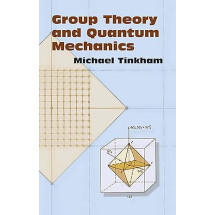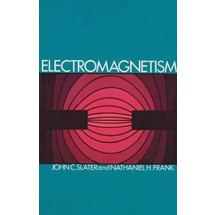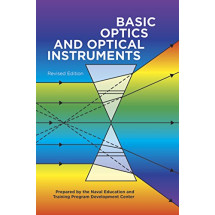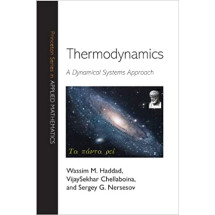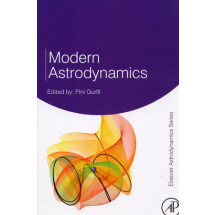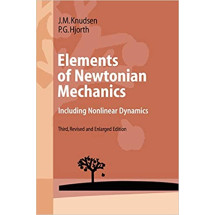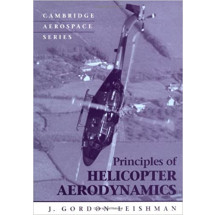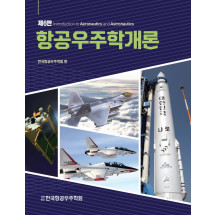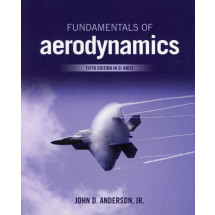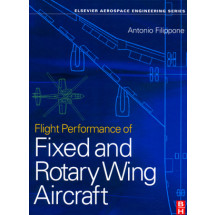1 An Introduction to Vision Science
1.1 Visual Perception
1.1.1 Defining Visual Perception
1.1.2 The Evolutionary Utility of Vision
1.1.3 Perception as a Constructive Act
1.1.4 Perception as Modeling the Environment
1.1.5 Perception as Apprehension of Meaning
1.2 Optical Information
1.2.1 The Behavior of Light
1.2.2 The Formation of Images
1.2.3 Vision as an "Inverse" Problem
1.3 Visual Systems
1.3.1 The Human Eye
1.3.2 The Retina
1.3.3 Visual Cortex
2 Theoretical Approaches
2.1 Classical Theories of Vision
2.1.1 Structuralism
2.1.2 Gestaltism
2.1.3 Ecological Optics
2.1.4 Constructivism
2.2 A Brief History of Information Processing
2.2.1 Computer Vision
2.2.2 Information Processing Psychology
2.2.3 Biological Information Processing
2.3 Information Processing Theory
2.3.1 The Computer Metaphor
2.3.2 Three Levels of Information Processing
2.3.3 Three Assumptions of Information Processing
2.3.4 Representation
2.3.5 Processes
2.4 Four Stages of Visual Perception
2.4.1 The Retinal Image
2.4.2 The Image-Based Stage
2.4.3 The Surface-Based Stage
2.4.4 The Object-Based Stage
2.4.5 The Category-Based Stage
3 Color Vision: A Microcosm of Vision Science
3.1 The Computational Description of Color Perception
3.1.1 The Physical Description of Light
3.1.2 The Psychological Description of Color
3.1.3 The Psychophysical Correspondence
3.2 Image-Based Color Processing
3.2.1 Basic Phenomena
3.2.2 Theories of Color Vision
3.2.3 Physiological Mechanisms
3.2.4 Development of Color Vision
3.3 Surface-Based Color Processing
3.3.1 Lightness Constancy
3.3.2 Chromatic Color Constancy
3.4 The Category-Based Stage
3.4.1 Color Naming
3.4.2 Focal Colors and Prototypes
3.4.3 A Fuzzy-Logical Model of Color Naming
PART II SPATIAL VISION
4 Processing Image Structure
4.1 Physiological Mechanisms
4.1.1 Retinal and Geniculate Cells
4.1.2 Striate Cortex
4.1.3 Striate Architecture
4.1.4 Development of Receptive Fields
4.2 Psychophysical Channels
4.2.1 Spatial Frequency Theory
4.2.2 Physiology of Spatial Frequency Channels
4.3 Computational Approaches
4.3.1 Marr's Primal Sketches
4.3.2 Edge Detection
4.3.3 Alternative Computational Theories
4.3.4 A Theoretical Synthesis
4.4 Visual Pathways
4.4.1 Physiologlcal Evidence
4.4.2 Perceptual Evidence
5 Perceiving Surfaces Oriented in Depth
5.1 The Problem of Depth Perception
5.1.1 Heuristic Assumptions
5.1.2 Marr's 2.5-D Sketch
5.2 Ocular Information
5.2.1 Accormmodation
5.2.2 Convergence
5.3 Stereoscopic Information
5.3.1 Binocular Disparity
5.3.2 The Correspondence Problem
5.3.3 Computational Theories
5.3.4 Physiological Mechanisms
5.3.5 Vertical Disparity
5.3.6 Da Vinci Stereopsis
5.4 Dynamic Information
5.4.1 Motion Parallax
5.4.2 Optic Flow Caused by a Moving Observer
5.4.3 Optic Flow Caused by Moving Objects
5.4.4 Accretion/Deletion of Texture
5.5 Pictorial Information
5.5.1 Perspective Projection
5.5.2 Convergence of Parallel Lines
5.5.3 Position Relative to the Horizon of a Surface
5.5.4 Relative Size
5.5.5 Familiar Size
5.5.6 Texture Gradients
5.5.7 Edge Interpretation
5.5.8 Shading Information
5.5.9 Aerial Perspective
5.5.10 Integrating Information Sources
5.6 Development of Depth Perception
5.6.1 Ocular Information
5.6.2 Stereoscopic Information
5.6.3 Dynamic Information
5.6.4 Pictorial Information
6 Organizing Objects and Scenes
6.1 Perceptual Grouping
6.1.1 The Classical Principles of Grouping
6.1.2 New Principles of Grouping
6.1.3 Measuring Grouping Effects Quantitatively
6.1.4 Is Grouping an Early or Late Process?
6.1.5 Past Experience
6.2 Region Analysis
6.2.1 Uniform Connectedness
6.2.2 Region Segmentation
6.2.3 Texture Segregation
6.3 Figure/Ground Organization
6.3.1 Principles of Figure/Ground Organization
6.3.2 Ecological Considerations
6.3.3 Effects of Meaningfulness
6.3.4 The Problem of Holes
6.4 Visual Interpolation
6.4.1 Visual Completion
6.4.2 Illusory Contours
6.4.3 Perceived Transparency
6.4.4 Figural Scission
6.4.5 The Principle of Nonaccidentalness
6.5 Multistability
6.5.1 Connectionist Network Models
6.5.2 Neural Fatigue
6.5.3 Eye Fixations
6.5.4 The Role of Instructions
6.6 Development of Perceptual Organization
6.6.1 The Habituation Paradigm
6.6.2 The Development of Grouping
7 Perceiving Object Properties and Parts
7.1 Size
7.1.1 Size Constancy
7.1.2 Size Illusions
7.2 Shape
7.2.1 Shape Constancy
7.2.2 Shape Illusions
7.3 Orientation
7.3.1 Orientation Constancy
7.3.2 Orientation Illusions
7.4 Position
7.4.1 Perception of Direction
7.4.2 Position Constancy
7.4.3 Position Illusions
7.5 Perceptual Adaptation
7.6 Parts
7.6.1 Evidence for Perception of Parts
7.6.2 Part Segmentation
7.6.3 Global and Local Processing
8 Representing Shape and Structure
8.1 Shape Equivalence
8.1.1 Defining Objective Shape
8.1.2 Invariant Features
8.1.3 Transformational Alignment
8.1.4 Object-Centered Reference Frames
8.2 Theories of Shape Representation
8.2.1 Templates
8.2.2 Fourier Spectra
8.2.3 Features and Dimensions
8.2.4 Structural Descriptions
8.3 Figural Goodness and Pr?nanz
8.3.1 Theories of Figural Goodness
8.3.2 Structural Information Theory
9 Perceiving Function and Category
9.1 The Perception of Function
9.1.1 Direct Perception of Affordances
9.1.2 Indirect Perception of Function by Categorization
9.2 Phenomena of Perceptual Categorization
9.2.1 Categorical Hierarchies
9.2.2 Perspective Viewing Conditions
9.2.3 Part Structure
9.2.4 Contextual Effects
9.2.5 Visual Agnosia
9.3 Theories of Object Categorization
9.3.1 Recognition by Components Theory
9.3.2 Accounting for Empirical Phenomena
9.3.3 Viewpoint-Specific Theories
9.4 Identifying Letters and Words
9.4.1 Identifying Letters
9.4.2 Identifying Words and Letters Within Words
9.4.3 The Interactive Activation Model
PART III VISUAL DYNAMICS
10 Perceiving Motion and Events
10.1 Image Motion
10.1.1 The Computational Problem of Motion
10.1.2 Continuous Motion
10.1.3 Apparent Motion
10.1.4 Physiological Mechanisms
10.1.5 Computational Theories
10.2 Object Motion
10.2.1 Perceiving Object Velocity
10.2.2 Depth and Motion
10.2.3 Long-Range Apparent Motion
10.2.4 Dynamic Perceptual Organization
10.3 Self-Motion and Optic Flow
10.3.1 Induced Motion of the Self
10.3.2 Perceiving Self-Motion
10.4 Understanding Events
10.4.1 Biological Motion
10.4.2 Perceiving Causation
10.4.3 Intuitive Physics
11 Visual Selection: Eye Movements And Attention
11.1 Eye Movements
11.1.1 Types Of Eye Movements
11.1.2 The Physiology Of The Oculomotor System
11.1.3 Saccaadic Exploration Of The Visual Environment
11.2 Visual Attention
11.2.1 Early Versus Late Selection
11.2.2 Costs and Benefits of Attention
11.2.3 Theories of Spatial Attention
11.2.4 Selective Attention to Properties
11.2.5 Distributed versus Focused Attention
11.2.6 Feature Integration Theory
11.2.7 The Physiology of Attention
11.2.8 Attention and Eye Movements
12 Visual Memory and Imagery
12.1 Visual Memory
12.1.1 Three Memory Systems
12.1.2 Iconic Memory
12.1.3 Visual Short-Term Memory
12.1.4 Visual Long-Term Memory
12.1.5 Memory Dynamics
12.2 Visual Imagery
12.2.1 The Analog/Propositional Debate
12.2.2 Mental Transformtions
12.2.3 Image Inspection
12.2.4 Kosslyn's Model of Imagery
12.2.5 The Relation of Imagery to Perception
13 Visual Awareness
13.1 Philosophical Foundations
13.1.1 The Mind-Body Problem
13.1.2 The Problem of Other Minds
13.2 Neuropsychology of Visual Awareness
13.2.1 Split-Brain Patients
13.2.2 Blindsight
13.2.3 Unconscious Processing in Neglect and Balint's Syndrome
13.2.4 Unconscious Face Recognition in Prosopagnosia
13.3 Visual Awareness in Normal Observers
13.3.1 Perceptual Defense
13.3.2 Subliminal Perception
13.3.3 Inattentional Blindsight
13.4 Theories of Consciousness
13.4.1 Functional Architecture Theories
13.4.2 Biological Theories
13.4.3 Consciousness and the Limits of Science


